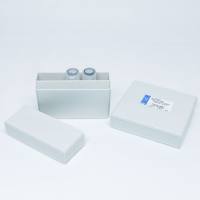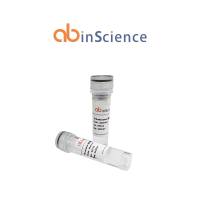For mutagenesis of BAC-cloned herpesvirus genomes, we have adapted a two-step replacement procedure originally described by O’Connor et al. (
1 ) for the manipulation of large DNA segments in
Escherichia coli (E. coli) . In principle, the mutant allele to be introduced is provided on a so-called shuttle plasmid. The mutant allele has to be flanked by regions homologous to the desired integration site of the mutation in the BAC (regions A and B,
see Fig. 1 , step 1). By homologous recombination in
E. coli , the shuttle plasmid will completely insert into the BAC, leading to a cointegrate (
see Fig. 1 , step 2). As a consequence, the cointegrate carries the wild-type, as well as a mutant allele, and a duplication of the homologous sequences flanking the mutation and the wild-type locus. The cointegrate can spontaneously resolve by homologous recombination via regions A or B giving rise to either the wild-type herpesvirus BAC plasmid or a mutant BAC, depending on which of the homologous regions (A or B) is used for recombination (
see Fig. 1 , step 3). The propensity for resolution of the cointegrate goes up with increasing sizes of the homologous sequences. However, even if homologous sequences of 2 or 3 kbp are provided, resolution of the cointegrates remains a rather rare event. Therefore, we have introduced a negative selection marker into the shuttle plasmid (the
sacB gene) that allows to select against the bacteria still containing a nonresolved cointegrate (
see Fig. 1 , step 4) and to identify bacterial clones harboring the mutant or the parental BAC.
Fig. 1. Two-step replacement procedure for mutagenesis of the BAC-cloned CMV genome by homologous recombination in E. coli . Step 1: The shuttle plasmid carrying the desired mutation plus flanking homologies (A and B) is transformed into bacteria that already contain the BAC. Step 2: Through homologous recombination via region A or B the shuttle plasmid is completely integrated into the viral BAC genome, leading to a cointegrate. Bacteria containing the cointegrate are selected by incubation at 43�C. Step 3: Resolution of the cointegrate via A or B leads to either the wildtype or the mutant BAC. Step 4: Bacteria harboring a resolved cointegrate are selected at 30�C on agar plates containing 5% sucrose.






